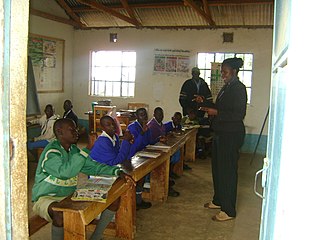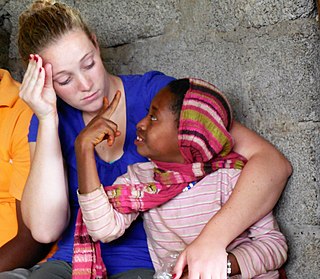
Māori is an Eastern Polynesian language and the language of the Māori people, the indigenous population of mainland New Zealand. A member of the Austronesian language family, it is related to Cook Islands Māori, Tuamotuan, and Tahitian. The Maori Language Act 1987 gave the language recognition as one of New Zealand's official languages. There are regional dialects. Prior to contact with Europeans, Māori lacked a written language or script. Written Māori now uses the Latin script, which was adopted and the spelling standardised by Northern Māori in collaboration with English Protestant clergy in the 19th century.

Sumner is a coastal seaside suburb of Christchurch, New Zealand and was surveyed and named in 1849 in honour of John Bird Sumner, the then newly appointed Archbishop of Canterbury and president of the Canterbury Association. Originally a separate borough, it was amalgamated with the city of Christchurch as communications improved and the economies of scale made small town boroughs uneconomic to operate.
The education system in New Zealand implements a three-tier model which includes primary and intermediate schools, followed by secondary schools and by tertiary education at universities and polytechnics. The academic year in New Zealand varies between institutions, but generally runs from early February until mid-December for primary schools, late January to late November or early December for secondary schools and polytechnics, and from late February until mid-November for universities.

New Zealand Sign Language or NZSL is the main language of the deaf community in New Zealand. It became an official language of New Zealand in April 2006 under the New Zealand Sign Language Act 2006. The purpose of the act was to create rights and obligations in the use of NZSL throughout the legal system and to ensure that the Deaf community had the same access to government information and services as everybody else. According to the 2013 Census, over 20,000 New Zealanders know NZSL.

Van Asch Deaf Education Centre was located in Truro Street, Sumner, Christchurch, New Zealand. It was a special school for deaf children, accepting both day and residential pupils, as well being as a resource centre providing services and support for parents, mainstream students and their teachers in the South Island and the Lower North Island.
Cook Islands Māori is an Eastern Polynesian language that is the official language of the Cook Islands. Cook Islands Māori is closely related to, but distinct from, New Zealand Māori. Cook Islands Māori is simply called Māori when there is no need to disambiguate it from New Zealand Māori, but it is also known as Māori Kūki ʻĀirani or, controversially, Rarotongan. Many Cook Islanders also call it Te reo Ipukarea, literally "the language of the Ancestral Homeland".
NextSense, formerly the Royal Institute for Deaf & Blind Children (RIDBC), in Sydney provides a range of educational services for students with vision and/or hearing impairment, including specialist schools for signing deaf students, oral deaf students, and students with sensory and intellectual disabilities.

Fruitvale Road railway station is on the Western Line of the Auckland railway network. It is near local schools, including two major high schools.

Kelston is a residential suburb of West Auckland, New Zealand. Originally a ceramics manufacturing centre, the area is now mostly residential, including a number of schools. Kelston is located in, and its name has been given to, the Kelston parliamentary electorate.

Kelston Boys' High School ("KBHS") is an all-boys state secondary school in Kelston, a suburb in the Waitakere region of Auckland, New Zealand. It was created in 1963 when the roll of Kelston High School became too large for the site on the corner of Archibald and Gt North Rds. The boys moved to a new site further down Archibald Road, leaving the original site to be the home of Kelston Girls High School.

Nelson Central School is a state primary contributing school located in the inner city of Nelson at the top of the South Island of New Zealand teaching children of both genders aged 5 to 11 years.

Kura kaupapa Māori are Māori-language immersion schools in New Zealand, where the philosophy and practice reflect Māori cultural values with the aim of revitalising Māori language, knowledge and culture. Kura kaupapa Māori are established under the Education Act (1989). The term kaupapa Māori is used by Māori to mean any particular plan of action created by Māori to express Māori aspirations, values and principles.

Deaf education is the education of students with any degree of hearing loss or deafness. This may involve, but does not always, individually-planned, systematically-monitored teaching methods, adaptive materials, accessible settings, and other interventions designed to help students achieve a higher level of self-sufficiency and success in the school and community than they would achieve with a typical classroom education. There are different language modalities used in educational setting where students get varied communication methods. A number of countries focus on training teachers to teach deaf students with a variety of approaches and have organizations to aid deaf students.
Te Wharekura o Ruatoki is a rural school in the Māori settlement of Ruatoki in the Eastern Bay of Plenty region, New Zealand, serving children in years 1 through 13. It was established as Ruatoki Native School in 1896 after a visit by Richard Seddon and James Carroll. In 1978 it became New Zealand’s first officially bilingual school.

Deaf studies are academic disciplines concerned with the study of the deaf social life of human groups and individuals. These constitute an interdisciplinary field that integrates contents, critiques, and methodologies from anthropology, cultural studies, economics, geography, history, political science, psychology, social studies, and sociology, among others. The field focuses on the language, culture, and lives of the deaf from the social instead of the medical perspective.
Arapera Hineira Blank was a New Zealand poet, short-story writer and teacher. She wrote in both te reo Māori and English, and was one of the first Māori writers to be published in English. Her work focussed on aspects of Māori life and the life of women. In 1959 she was awarded a special Katherine Mansfield Memorial Award for a bilingual essay. In 1986 she published a collection of poetry, and after her death her son published a further collection of her writing in 2015.
Kelston is a village in the United Kingdom. It may also refer to:

Kelston Girls’ College (KGC) is a single-sex girls state secondary school in Kelston, a suburb in West Auckland, New Zealand. It was created in 1963 when the roll of Kelston High School became too large for the site on the corner of Archibald and Great North Roads. The boys moved to a new site further down Archibald Road and the original site became the home of Kelston Girls' High School.

Hana Merenea O'Regan is a Māori language advocate and academic in New Zealand. She is a member of the Ngāi Tahu iwi (tribe).














